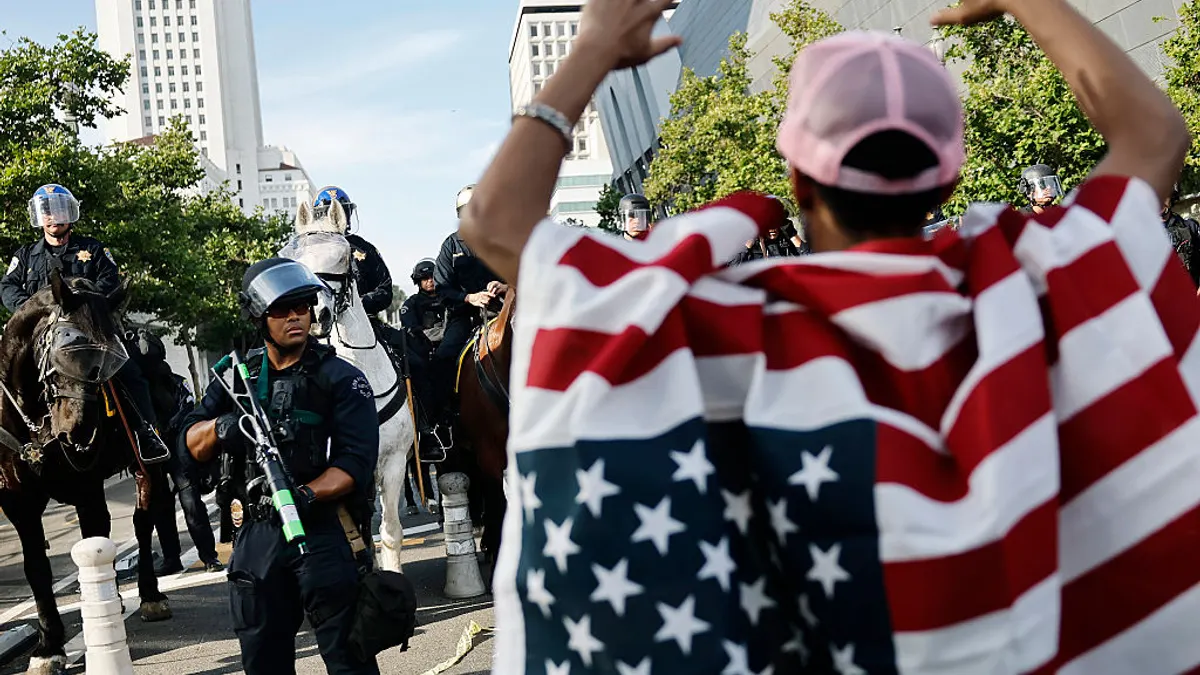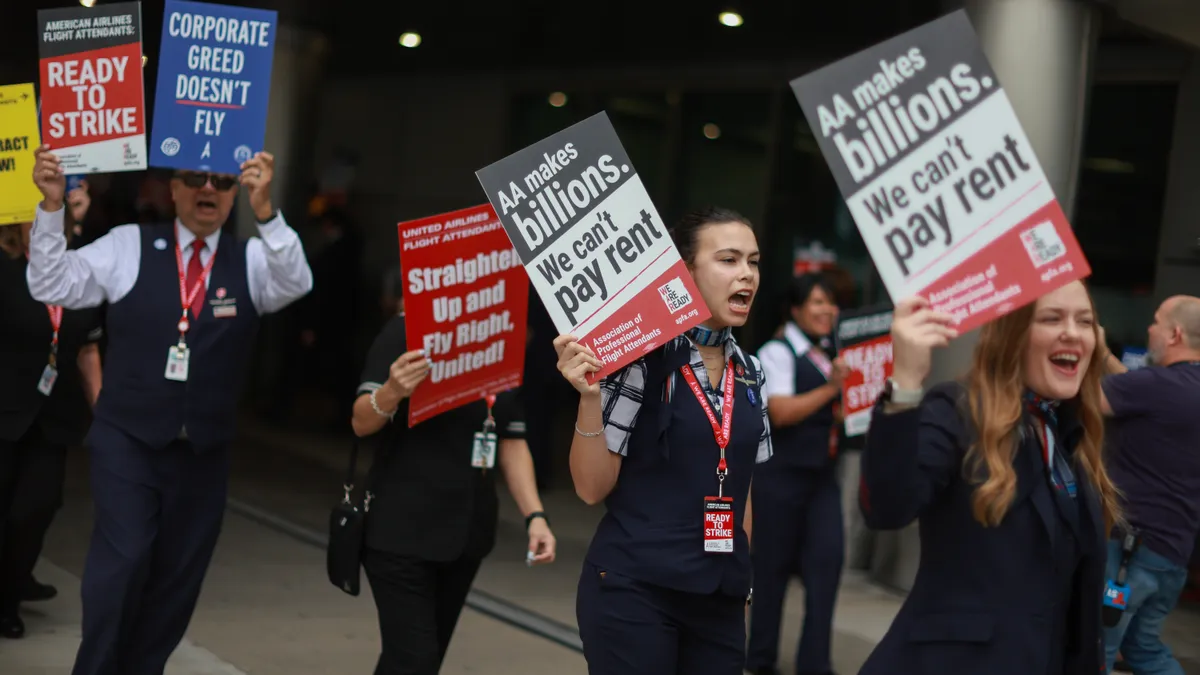In June, Walmart — one of the most recognizable retail brands in the business — updated the look of its iconic employee vests. After allowing employees to wear more casual clothes, including jeans, to work, they decided to update the company vests to make them more customizable and modern.
"Uniforms are important, but looking exactly like everyone else isn't," the announcement reads.
Walmart is far from the only institution to recognize this. Target also updated their uniform code this year and even financial institutions, like Goldman Sachs, relaxed their traditionally buttoned-up dress codes in 2019.
Some industries require a formal dress code; imagine being represented by an attorney who has donned cargo shorts and a Hawaiian shirt, for example. But for organizations that can relax their requirements, doing so may be a tactic worth considering that gives workers more control over their comfort, Katie Evans-Reber, head of people for staffing platform Wonolo, told HR Dive.
"We know that when people feel respected, appreciated, and comfortable, they will do their best work," she said in an email. "As long as the dress code policy doesn't conflict with safety (please, no open-toe shoes in the warehouse!), encouraging a casual dress code is a step in the right direction for cultivating a progressive and worker positive workplace."
Evans-Reber said she's seen more workplaces in recent years adopt casual dress code policies to give workers autonomy over what they wear.
Evolution of the dress code
Employees should have input in the company's uniform, Erica Denner, head of people and culture at HR platform Kazoo, told HR Dive in an email, but dress codes are more often than not a product of the culture. In other words, employees will exert indirect input, anyway.
"Many of us know the difference walking into a consulting firm versus a technology startup," she said. "Those cultures (and in turn, dress codes) are the product of the mindset, personalities, and work of the employees. Employers should listen and observe what resonates with their employees in regards to dress code."
Those who have been in HR long enough to remember the excitement over Casual Fridays know that employees loved the chance to dress down and be comfy at work. That perk mentality is still relevant.
"If you can cultivate an environment where employees feel rewarded, gratified and comfortable being themselves at work and it aligns with the expectations of the employees, there's no doubt that productivity, quality of work and overall morale will increase," Denner said. A casual work environment signals the company values self-expression and comfort, and that the focus should be on the work, not the outfit of the person doing the work, she adds.
For some organizations, dress code changes are a way to motivate and challenge. "Last fall, Target's chief stores officer, Janna Potts, gave our store teams a challenge," Jacqueline DeBuse, company spokesperson for Target, told HR Dive in an email. "If holiday sales goals were met, they could wear #jeansforever. Our incredible team delivered, and their hard work was recognized with a permanent change to the dress code."
The importance of employee input
Paul Falcone, author of 101 Tough Conversations to Have with Employees, noted that employee input on uniform options is important: "Only they know the ins and outs of their positions and what will work best, both in terms of comfort and utility."
If the uniform requirement is more about fashion, he suggests, it's important to gain employee input because the practicality of the wardrobe is critical to employee comfort and wellbeing, which always produces the best client service. "Workers will appreciate the fact that they were given an opportunity to weigh in on the ultimate uniform selection, no matter where they work or what line of work they're in," he said. If employees are part of the solution, acceptance of new uniforms or work attire guidelines will go more smoothly.
Making sure uniformity works
For some companies, including retailers, hospitals and airlines, a full uniform may be required. For organizations with front-facing employees, the uniform code could include a variety of options that still fit the desired presentation.
If employees wear a uniform, branded tee or vest on the job, making sure the outfit is clean and presentable may be the only requirement, but communicating that up front is a must. "As long as managers and employees have the same expectations about what to wear," Denner said, "employees can be happy and productive without having to stress about their workplace fashion choices."





















